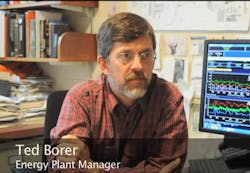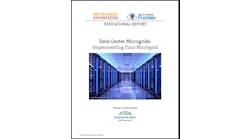In three easy-to-understand charts, Princeton University’s Ted Borer explains how microgrids add reliability and efficiency to the larger electric grid.
Microgrids reflect the local community priorities
Microgrid operators often choose not to own enough behind-the-meter power generation to meet peak electric demands. Most don’t find it cost-effective to generate all their own power at all times. But they own enough generating capability to meet mission-critical demands and they can decide in advance which power uses are deferrable in an emergency. They have re-claimed the ability to decide what lamps get lit in a crisis.
One can imagine that in a regional emergency, municipal services such as police, fire, hospital, water, sewer, railroads, and sources of a community’s food and fuel should get highest priority. Similarly, when health and safety are at risk, some electric demands could be deferred such as: a sports arena, furniture store, clothing factory, theater, skating rink, or a shoe repair. If power is only supplied and controlled from distant locations outside a community, these choices are not always available. How could a power grid be arranged to improve reliability without excess cost? In simple terms we want to reduce the scale of failures and diversify risk while operating at high efficiency. Let us look at a highly simplified example.
Figure 1 (above) shows a regional power grid with 600 megawatts peak demand, represented as twelve 50 MW loads. There is one main 600 megawatt generator to meet the demand and one 600 megawatt generator available as back-up for any time the main generator is unavailable. The two utility plants are located far from each other to minimize the risk of common-mode failure. Each green building represents one or more critical loads. Dark lines represent the high-voltage transmission system. Lighter lines represent a medium voltage distribution system. Each blue building represents one or more deferrable loads. With 100% back-up, the system has “N-1” redundant generation. But there is no cost-effective means to use the waste heat since the generating stations are far from the thermal users. This represents much of today’s grid.
Figure 2 (below) shows two different vulnerable points where the loss of a transmission node or substation could interrupt power to several critical and non-critical loads, even when both generators are available. This was the most common type of failure during Hurricane Sandy.
Figure 3 (below) shows a hybrid grid made of central utility plants with distributed microgrids. By localizing some power generation, the transmission and distribution inefficiencies are reduced. There is the possibility of improved reliability and efficiency without building additional high voltage distribution systems. The opportunity for CHP exists, while non-critical loads can still be fed by larger, relatively efficient generators. Either one of the two central utility plants can fail, but all loads get service. Both of the 200 MW utility plants or a few of the microgrid plants could fail and all critical loads would still get service. Similarly we have reduced the risk of transmission system failures with more distributed generation. The spinning reserve requirement has dropped from 600 MW to just 200 MW. Note that in this example, 800 MW of distributed power generation is providing a much higher level of reliability and efficiency than 1200 MW of utility-only generators shown in Figure 1.
Ted Borer is the energy plant manager at Princeton University and co-chair of the Microgrid Resources Coalition.







